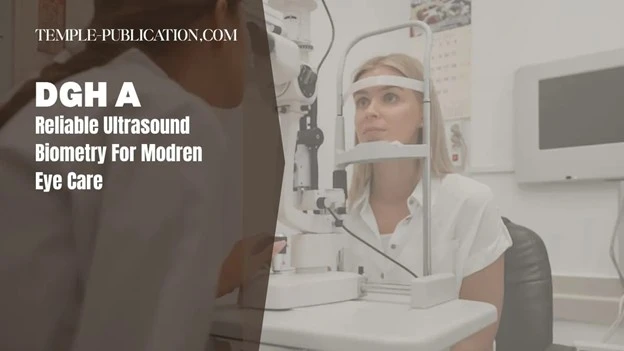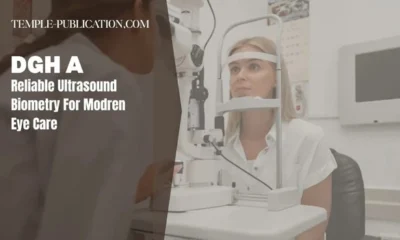HEALTH AND FITNESS
The Final Stages of Dementia: Do Patients Know They’re Dying?

Dementia is a complex and progressive condition that affects memory, cognition, and the ability to communicate. As dementia advances to its later stages, it impacts nearly every aspect of an individual’s mental and physical functioning, including awareness of self and surroundings. One of the common questions that caregivers, loved ones, and even healthcare professionals ask is whether patients with dementia are aware of their own impending end of life.
This question can only be understood through compassionate exploration into what awareness might look like in advanced dementia, how patients experience the end-of-life process, and how to provide meaningful support to caregivers.
Understanding Awareness in Advanced Dementia
Patients with early-stage dementia are still usually aware of their condition but often lose this awareness later in the disease. When dementia progresses to its advanced stages, it severely deranges cognitive functions thus making it difficult to figure out do dementia patients know they are dying?. Patients experience extreme memory failure, become unable to identify their family members, and is disoriented about themselves and even their surroundings. This level of deterioration leaves patients in a position where they may not be able to understand even the basic concepts related to dying.
Physical and Emotional Experiences at the End of Life
The experiences for patients with dementia are physical and emotional, offering some specific challenges compared with other terminal conditions. As much as the patient is unaware that they are nearing the end of life, their loved ones may pick a sense of something amiss by the physical signs of advanced dementia and the emotions brought by these changes.
1. Physical Signs of the End Stage
Patients with dementia mostly manifest physical signs that reflect the progress they have made toward the final stages of life. This involves drowsiness, lack of appetite, deterioration in their general physical health, and infections. Towards the end, the body starts shutting down gradually while patients sleep much and eat little as they need no feeding in the body. Dementia patients may not take proper food, which also results in failure to swallow well and cause dehydration along with further weight loss.
2. Behavioral Changes
Behavior also changes dramatically at the terminal stage of dementia. Patients respond, but that is a minimum level of interaction in the environment around them with caregivers who care for them. Such patients will sometimes display a form of agitation, restlessness, and anxiety. All these manifestations are not reflective of awareness about impending death but only result from changes in physical and neurological terms.
3. Pain and Discomfort
A dementia patient probably does not express the experience of the pain or discomfort in terms of words, but he does experience it. Moaning, grimacing, or physical restlessness were the common markers. These all suggest discomfort to the caregiver about such a particular patient. A dementia care unit can help residents who are suffering from such conditions properly.
Supporting a Patient with Dementia at the Final Stages of Life
Comfortable and appropriate palliative care during the final stages of life for dementia patients can indeed have a great impact on the comfort of such patients and the quality of their life. Indeed, most patients do not understand their condition, making it easier for caregivers to focus on the reduction of discomfort, enhancement of emotional comfort, and peaceful settings.
Palliative Care and Hospice
For patients suffering from dementia at the end stage, generally, it is advised to opt for palliative or dementia care for the administration of their symptoms and relief from discomfort. These provide unique care in terms of managing physical pain, anxiety, and other symptoms occurring in the final stages of a person’s life. Service providers who have been well-trained in hospice care understand the needs of the patient and are able to give excellent support to their caregivers through pain management, dignified living, and peaceful environments.
Emotional and Sensory Comfort
Dementia patients may not understand what is happening, but stimulating their senses can comfort them and give them a sense of security. Gentle touch, soothing music, and familiar fragrances can be some sensory stimulation that may help in soothing a patient’s nerves and make the patient feel better. Also, grounding can occur as a result of a known patient and their routine or belongings. These strategies can help to reduce anxiety and promote a sense of calm, even if the patient is not consciously aware of the rationale for their care.
Support for Family and Caregivers
The care of a patient who has dementia to the end stage is physically exhausting but emotionally draining. Families experience grief, guilt, and despair as they witness their loved ones decline. Healthcare workers, therapists, and the hospice crew may also help the patients’ families in making selections that will be very distressing to them and relieve them of the psychological load of this patient’s disease. Some alleviation for these last times can be experienced by the presence of the family, such as rethinking special times with the patient, reading to them, or embracing their hands, among other acts.
Conclusion: The Mystery of the Last Dementia Stage
It is confusing and not well understood that “do dementia patients know they are dying or not”. They may not have clear knowledge of what is happening, but they may still react emotionally and sense the surroundings. The goal is to offer care in a compassionate manner, to control symptoms, and to provide emotional support. Dementia care provide peaceful ambiance that supports a better end in all senses for the patient and his or her loved ones.
HEALTH AND FITNESS
Why LeahRoseVIP Is the Go-To Digital Magazine for Modern Wellness

🌿 “Wellness is no longer a luxury—it’s a lifestyle. And LeahRoseVIP is leading the charge.”
In a digital world flooded with lifestyle advice, finding a wellness platform that blends science, soul, and design can feel overwhelming. That’s where LeahRoseVIP shines. With a commitment to evidence-based guidance, inclusive values, and an intuitive user experience, this online magazine has become a trusted companion for modern wellness seekers. Whether you’re into clean eating, mindful travel, or skincare that works, LeahRoseVIP is designed to educate and empower.
What Is LeahRoseVIP?
LeahRoseVIP is a digital lifestyle magazine that publishes in-depth, well-researched content across five key categories: health, beauty, food, travel, and wellness. Created for intentional readers seeking balance in a fast-paced world, it emphasizes accessible wellness rooted in expert knowledge and thoughtful design.
Unlike trend-chasing blogs or influencer-heavy platforms, LeahRoseVIP relies on insights from registered dietitians, mental health professionals, dermatologists, and experienced writers to deliver content that’s both credible and applicable.
The Growing Demand for Digital Wellness Platforms
According to Statista, the global wellness market surpassed $5.6 trillion in 2024, with digital wellness platforms becoming a central part of that growth. More people are turning to online magazines like LeahRoseVIP for holistic advice that fits their lifestyle.
“Modern wellness isn’t about perfection—it’s about progression. That’s what platforms like LeahRoseVIP understand deeply.” — Dr. Maya Thompson, Holistic Health Researcher.
Digital platforms allow for on-demand learning, personalized journeys, and interactive content, making them more dynamic than traditional print magazines. LeahRoseVIP takes full advantage of this evolution.
Types of Articles in LeahRoseVIP
LeahRoseVIP’s Health & Wellness Coverage
LeahRoseVIP doesn’t just scratch the surface—it dives deep into health topics like:
- Sleep hygiene and circadian rhythms
- Hormonal balance for women and men
- Gut-brain connection and microbiome science
- Movement for mental health
Each article is fact-checked and often reviewed by credentialed professionals to ensure readers are receiving accurate, up-to-date advice.
Mental Health, Mindfulness & Digital Resilience
LeahRoseVIP has a mindful perspective on mental health; it is based on emotional strength and not a quick solution. It comprises journaling prompts to clarify the contents, guided meditations, breathing exercises, and suggestions on how to combat workplace screen fatigue and digital burnout. The audience will get useful ideas about overcoming anxiety and burnout as well, based equally on psychology, neuroscience, and mindfulness. This balanced approach bears the character of a reliable source to find quality and practical emotional assistance in the modern world, where people are forced to make decisions in short periods.
Clean Beauty with Real Ingredients
Its articles center on niacinamide, squalane, and retinol. In contrast to trend-based beauty programs, its instructions are customized by type of skin, rather than by marketing fever. It also features cruelty-free and sustainable brands on its platform, so it is the favorite destination of the readers who need clean beauty supported by transparency, efficacy, and sustainability.
Plant-Based Food & Nutrition
Whether it be the anti-inflammatory food lists or breakdowns of adaptogens and nootropics, LeahRoseVIP reports on plant-based eating with transparency and details. Its balanced recipe books promote healthy intestines, hormonal harmony, and daily energy. The platform is built on a functional nutrition approach that gives the reader empowered choices based on science, culture, and sustainability without the diet mentality that afflicts the wellness space.
Mindful Travel & Sustainable Exploration
LeahRoseVIP is ahead of the trend when it comes to travel, as it offers guides to eco-lodges and wellness retreats, and green cities. Viable traveler feedback will be authentic, whereas insights on digital nomads will place the focus on the aspects of mental and physical well-being on the road. By prioritizing self-conscious topicality, the portal assists users in creating meaningful trips supported by sustainable processes in development and environmental care.
Digital Balance & Screen-Time Solutions
Embracing the reality of tech overload, LeahRoseVIP has suggestions on how to implement digital wellness practices. The platform promotes more health-conscious behaviors, such as productivity techniques, such as Monk Mode and Time Boxing, to screen-free evening routines. There are also reviews of the best wellness apps and wearables, which can help one go through life with more focus and presence and peace of mind.
How to Get Started with LeahRoseVIP
It is easy and worthwhile to get going with LeahRoseVIP. First, sign up for the weekly newsletter to receive expert wellness tips directly to your inbox. View the most popular articles on the homepage, all about mental health, to clean beauty. Shower in wellness starter kits that are full of need-to-read guides assisting you in establishing healthier patterns. You can follow LeahRoseVIP on Instagram to stay inspired every day and get your self-care bite-sized fun, as well as be a part of an aspiring community focused on intentionality and balanced living.
How LeahRoseVIP Compares to Other Wellness Platforms
| Feature/Platform | LeahRoseVIP | Goop | Well+Good | MindBodyGreen |
| Expert-Reviewed Content | ✅ Yes | ❌ Not Always | ✅ Sometimes | ✅ Often |
| Accessibility Features | ✅ Full support | ❌ Minimal | ❌ Minimal | ❌ Minimal |
| Clean Beauty Focus | ✅ Science-Based | ✅ Yes | ✅ Yes | ✅ Yes |
| Plant-Based Nutrition | ✅ Deep Coverage | ✅ Recipes | ✅ Recipes | ✅ Articles |
| User Submissions | ✅ Yes | ❌ No | ❌ No | ❌ No |
| Podcast/Webinar Plans | ✅ Upcoming | ✅ Yes | ✅ Yes | ✅ Yes |
Future Expansion
LeahRoseVIP is evolving. Future developments include:
- Podcast series featuring experts, authors, and readers
- Live webinars on skincare, mental health, and nutrition
- Personalized dashboards with curated article feeds and wellness plans
- Downloadable guides and interactive tools for habit tracking.
Conclusion
LeahRoseVIP is more than a wellness blog. It is a complete virtual sanctuary; the vibe of medical science, the welcoming atmosphere of a supportive community, and the modern ambiance of a design. Whether you are ready to begin a wellness journey or want to advance an established one, LeahRoseVIP is a stable and rejuvenating place to grow.
HEALTH AND FITNESS
DGH A: Reliable Ultrasound Biometry for Modern Eye Care Practices

In such a rapidly changing environment as ophthalmology today, it is not an option to be inaccurate, but a necessity. Both when completing cataract surgeries and when assessing complicated post-refractive patients, accurate biometric information is the essential element of effective care. As needs escalate in portability, effortless application of EMR and novel diagnostics, clinics move towards smaller and software-driven instrumentation to generate hospital-quality results wherever operations are performed.
Enter the DGH A, also known as the DGH 6000 Scanmate A—a lightweight, USB-powered A-Scan biometer that’s transforming how modern eye care professionals measure and evaluate ocular structures.
What is the DGH A?
The DGH A (6000 Scanmate A) is a high-resolution ultrasound A-scan biometer designed explicitly for measuring key ocular parameters, including axial length, anterior chamber depth, and lens thickness. It utilises a 10 MHz transducer and supports both contact and immersion techniques, delivering remarkable precision with a repeatability of ±0.03 mm in immersion mode. Unlike older standalone units, the DGH A connects directly to a Windows PC, making it highly portable and accessible for in-office use.
The DGH A is utilized regularly by clinicians to perform biometric testing prior to the placement of intraocular lenses (IOL) surgery, where it is considered useful in validating the lens power calculations to be performed, even in the case of post-LASIK or even dense cataracts. Its user friendly software, smart alignment system, and real-time waveform analysis allows novice and master users to come up with consistenly good results.
Key Features of the DGH A
- High-Precision Imaging: The DGH A is equipped with a 10MHz transducer, providing reliable measurements with 0.03 mm repeatability in immersion mode, making it suitable for use in complex clinical settings.
- Compact & USB-Powered: The machine is directly connected to a Windows PC, eliminating the need for cumbersome equipment or a separate power source, which is ideal for mobile clinics or practices with limited space.
- Smart Alignment Feedback: Audible and visual feedback enable clinicians to keep the probe centred, decreasing the likelihood of error and enhancing measurement reliability.
- EMR/EHR Compatibility: Easy interactions with electronic health records facilitate the workflow, enhancing documentation and data accuracy in patient files.
How Does the DGH A Work?
The DGH A is a high-frequency ultrasound measurement of the distance between two surfaces of the ocular. As soon as the probe (transducer) is well placed, either through contact (lightly touching the cornea) or immersion (using a fluid-filled shell to prevent corneal compression), the machine records the echoes from the cornea, lens, and retina. These echoes are converted into a waveform mapped in the Scanmate software.
The software processes the peaks of the waveform using in-built algorithms and provides an averaging of consistent values, removing outliers. The user can choose from standard IOL power formulas, such as SRK/T, Hoffer Q, or Holladay, to obtain accurate IOL suggestions. The software provides real-time guidance to clinicians through its alignment system, which reduces variability and improves scan quality.
Applications in Clinical Practice
- Cataract Surgery: Accurately measures axial length to determine the ideal intraocular lens power.
- Post-Refractive Surgery: Offers consistent results even in eyes with altered corneal architecture due to LASIK or PRK.
- Routine Biometry: Essential for general ocular assessments, pre-operative evaluations, and refractive error monitoring.
- Pediatric Ophthalmology: Non-invasive and quick scanning is ideal for younger, less cooperative patients.
Software Integration & IOL Calculation
One of the most outstanding characteristics of the DGH A is the presence of Scanmate software, which acts as both the control centre and the data analysis unit of the device. After measurements have been detected, the software automatically analyses waveform patterns and identifies the best readings, displaying them in a user-friendly graphical dashboard layout.
Calculation of IOLs may be conducted in real-time using a wide variety of pre-installed formulas, and the system will permit clinicians to edit the constants in connection with the reasonableness for an individual patient or according to surgeon preferences. Moreover, through the integration of EMR and EHR, these results are directly accessible and can be added to the patient’s electronic medical record; thus, there is no need to manually retype documents and minimise mistakes in documentation.
User Experience & Portability
The portability of the DGH A should be considered as one of its greatest strengths. Lightweight, weighing less than 1 kg and equipped with a USB-powered source, the device is ideal for mobile eye camps, satellite clinics, or small ophthalmology offices.
Consumers appreciate the short setup duration, and the probe is also ergonomic and easy to clean between cycles. The software’s user interface (UI) is clean and menu-based. It requires no advanced technical knowledge to operate, making it accessible to both novice and experienced technicians, as well as residents in the ophthalmology field.
Challenges and Limitations
- PC Dependency: Since the DGH A requires a Windows computer, it cannot function independently like traditional console-based devices.
- Learning Curve with Immersion: Although immersion offers the highest accuracy, it demands more skill and training than the contact method.
- Limited Use in Dense Cataracts: In some cases with severe lens opacities, signal strength may be diminished, requiring additional scans or backup imaging tools.
- No Built-In Display: All interactions are software-driven, so if the PC malfunctions or isn’t available, the device can’t operate.
DGH A vs. Other A-Scan Biometers
| Feature | DGH A (6000 Scanmate) | Sonomed VuPad A-Scan | Tomey AL-4000 |
| Transducer Frequency | 10 MHz | 10 MHz | 10 MHz |
| Measurement Techniques | Contact & Immersion | Contact & Immersion | Contact Only |
| Accuracy (Repeatability) | ±0.03 mm (immersion) | ±0.04 mm | ±0.05 mm |
| EMR/EHR Integration | Yes | Yes | Limited |
| Portability | High (USB-Powered) | Medium (Tablet-Based) | Low (Console) |
| Software-Based IOL Calculations | Yes | Yes | Yes |
| Standalone Operation | No | Yes | Yes |
Comparisons with Similar Devices
- Sonomed VuPad offers a standalone tablet-like interface but costs significantly more.
- Tomey AL-4000 is accurate but lacks immersion support and modern software integration.
- The DGH A stands out for its balance of portability, precision, and cost-effectiveness, especially in clinics already using EMR systems.
Conclusion
The DGH A (6000 Scanmate A) is a perfect fit for current ocular practices seeking an affordable, lightweight, portable, and dependable ultrasound biometry system. It is highly accurate, can be used in both metric and imperial measurement systems, and can also be combined with electronic records. Although it requires a connected PC to work with and also comes with the compromise of needing to be skilled in immersion scanning, it offers numerous rewards that positively outweigh these few drawbacks.
To the cataract surgeon, to the general ophthalmologist, and the hand-held physician, the DGH A is a reliable companion in the round of exact eye surgery.
HEALTH AND FITNESS
Transform Fitness with Kingymab: Strength, Flexibility, HIIT

Kingymab is an innovative health and fitness training routine that uniquely combines strength training, flexibility, and cardio in a dynamic, interactive, and fun way. It targets balance, stability, endurance, and overall physical fitness by covering various muscle sets through a blend of different exercise methodologies. Muscle confusion is applied where movements and intensity levels are switched frequently to allow different muscles to be worked on differently, hence no time does the muscles get used to such a style of workout. The periodic inclusion of high-intensity interval training (HIIT) guarantees that the heart rate is raised for maximum caloric expenditure as well as cardiorespiratory endurance.
The Philosophy Behind Kingymab
Kingymab stems from muscle confusion and HIIT principles which are based on functional training, bodyweight training, and other approaches to training. The muscle confusion technique helps avoid getting used to a specific program through constant variations in exercises, the degree of difficulty and rests in between. It makes workouts interesting and guarantees that the muscles are constantly pushed to the limit, making one stronger, enduring, and fitted.

Key Components of Kingymab
- Strength Training: It comprises many strength movements that are done with weight, bands, and dumbbells for the development of muscles, a boost of stamina, and general body strength.
- Flexibility: Pictured warm-up training is essential in Kingymab to promote or maintain adequate joint variety, reduce or avoid injuries, and increase motion economy.
- Cardiovascular Exercises: Cardiovascular exercises at intense levels like jump, burpee, and sprint are incorporated to enhance heart health, endurance, and metabolism activities.
- Functional Training Techniques: It focuses on exercises that resemble normal ‘useful’ body motions to address functional fitness and the body’s overall capacity.
Benefits of Kingymab
- Physical Fitness and Muscle Toning: Strength exercises, along with cardio exercises, create a toned muscle mass, the build-up of lean body mass, and, in general, physical fitness.
- Improved Balance and Stability: They strengthen and keep the muscles sharply focused, which collectively helps in body balance and coordination. They also contain special stability exercises.
- Enhanced Cardiovascular Health: HIIT components raise the intensity through the cardiovascular system, hence the heart’s endurance and overall heart health.
- Increased Flexibility and Range of Motion: Flexibility training is a form of exercise that helps to maintain flexibility of muscles and joints that hinders chances of vulnerability to injuries in addition to enhancing flexibility.
- Mental Health Benefits: The live and lively execution of Kingymab workouts enables individuals to enhance their mood while at the same time easing their stress levels and enhancing their psychological well-being.
Target Audience
- Beginners: Those new to fitness can start with basic Kingymab routines that introduce foundational movements at a manageable intensity.
- Advanced Practitioners: More experienced individuals can take advantage of its adaptable structure to increase the complexity and intensity of their workouts.
- All Ages: Its flexible nature makes it suitable for people of all ages, including seniors looking to maintain their health and fitness.
Training Structure
Kingymab session is a format where a combination of all the key fitness components is achieved hence it takes about 30 to 60 minutes and is performed thrice to five times a week. Before every session, there is a dynamic warm-up that ushers the body into the exercises while afterward there is a cool down that helps in the recovery process.

Equipment Needed
This is because Kingymab does not demand much equipment and this means that it can be practiced anytime and any place since it can be practiced from anywhere that one feels most comfortable. Minimum workout gear such as body weight, bands, and a pair of dumbbells are sometimes adequate to provide a full workout, even though complex workouts may have kettlebells, medicine balls, or suspension trainers. Most of the exercises incorporate body weight, which means the program is versatile and does not necessarily require joining a gym.
Safety and Precautions
It is always important to consider your safety when using any product for exercising and that should not have been different whilst using Kingymab. In this case, to avoid dangerous mishaps like strains, there are important protocols that need to be observed to maximize safety during workouts, including warm-ups, cool-downs, and posture. It is essential to implement the correct technique to make movements as effective as possible and to avoid any harm. First-timers or people with certain health objectives might be advised to hire a certified trainer.
Tracking Progress
Overseeing the level of progress is crucial to motivation and success in Kingymab. The improvement can thus be monitored through performance indicators like strength, endurance, and body composition. Staying on track and motivated is easier when people set realistic and purposeful goals; fitness apps and wearables are also beneficial in tracking performance and progress.
![]()
Supportive community
The Kingymab can be beneficial when one has a supportive community. The opportunity to join a group class or online forum offers encouragement, ultima, and support. Social media channels provide workout recommendations, schedules, and encouragement from other enthusiasts. To begin with, it can be suggested that having the company of other people with similar goals and plans can contribute to increased motivation and compliance with the set objectives.
Future
Looking ahead, Kingymab continues to evolve with exciting developments on the horizon. Future updates may include new exercise variations, virtual training options, and advanced tracking technologies. Wearable technology and AI-driven insights could further personalize and enhance the experience, making it even more effective and engaging. As more people seek at-home fitness solutions in a post-pandemic world, Kingymab is well-positioned to meet this growing demand.
Conclusion
Kingymab represents a comprehensive, adaptable, and engaging approach to fitness that can benefit individuals of all fitness levels. By combining strength, cardio, flexibility, and functional movements, it provides a balanced routine that promotes overall health and wellness. Whether you’re a beginner or an experienced fitness enthusiast, it offers the tools and support needed to achieve your fitness goals.
-

 BIOGRAPHY1 month ago
BIOGRAPHY1 month agoBehind the Scenes with Sandra Orlow: An Exclusive Interview
-

 HOME7 months ago
HOME7 months agoDiscovering Insights: A Deep Dive into the //vital-mag.net blog
-

 HOME10 months ago
HOME10 months agoSifangds in Action: Real-Life Applications and Success Stories
-

 BIOGRAPHY8 months ago
BIOGRAPHY8 months agoThe Woman Behind the Comedian: Meet Andrew Santino Wife




























